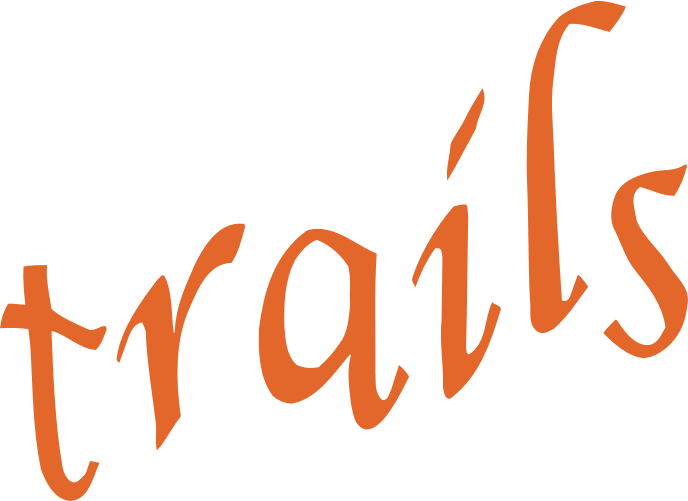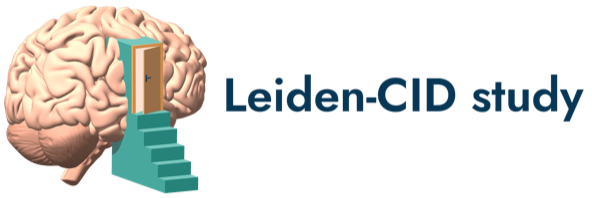-
measure Children’s Behavior Questionnaire (CBQ)
Study: Generation R Mode of collection: SelfAdministeredQuestionnaire Available measurements: Generation R 5-6 yearsThe Children’s Behavior Questionnaire (CBQ) is a caregiver report that measures temperament in children aged 3 to 7 years. Domains of the CBQ include positive and negative emotion, motivation, activity level, and attention.Created October 17, 2024 • Updated October 20, 2024 -
measure Cheating games
Study: Generation R Mode of collection: Observation Available measurements: Generation R 4 yearsCheating games (i.e., temptation resistance paradigms) were used to assess cheating behavior at age 4 years. Children participated in two separate games (dart game and frog game), in which, if the rules of the game were followed, winning was impossible. Therefore, children were tempted to cheat.Created October 17, 2024 • Updated October 20, 2024 -
measure Infant Behavior Questionnaire Revised (IBQ-R)
Study: TRAILS Mode of collection: SelfAdministeredQuestionnaire Available measurements: The Next Generation NEXT - T2 NEXT - T3 NEXT - T4 NEXT - T5The Infant Behavior Questionnaire (IBQ) and Infant Behavior Questionnaire-Revised (IBQ-R) were designed to measure temperament in infants between the ages of 3 and 12 months. The IBQ assesses dimensions of temperament, such as activity level, soothability, fear, distress to limitations, smiling and laughter, and duration of orienting, among others. The...Created October 17, 2024 • Updated October 20, 2024 -
measure Early Childhood Behavior Questionnaire (ECBQ)
Study: TRAILS Mode of collection: SelfAdministeredQuestionnaire Available measurements: The Next Generation NEXT - T2 NEXT - T3 NEXT - T4 NEXT - T5The Early Childhood Behaviour Questionnaire (ECBQ) assesses temperament in children aged between 1-3 years old. It was designed to provide a more comprehensive and detailed assessment of temperament compared to existing measures appropriate for toddlers.Created October 17, 2024 • Updated October 20, 2024 -
measure Delay of gratification task - Marshmallow task
Study: TRAILS Mode of collection: Observation Available measurements: The Next Generation NEXT - T4 NEXT - T5The Delay of Gratification task aims to measure self-regulation by presenting the child with the choice between a small reward in the short-term and a larger reward in the long-term. The classic implementation of the Delay of Gratification task is the Marshmallow experiment, in which a child is presented with one marshmallow right now and is instructed...Created October 17, 2024 • Updated October 20, 2024 -
measure Children’s Behavior Questionnaire (CBQ)
Study: TRAILS Mode of collection: SelfAdministeredQuestionnaire Available measurements: The Next Generation NEXT - T2 NEXT - T3 NEXT - T4 NEXT - T5The Children’s Behavior Questionnaire (CBQ) is a caregiver report that measures temperament in children aged 3 to 7 years. Domains of the CBQ include positive and negative emotion, motivation, activity level, and attention.Created October 17, 2024 • Updated October 20, 2024 -
measure Delay Discounting - Marshmallow task
Study: L-CID Mode of collection: Observation Available measurements: Early Childhood Cohort ECC - T2 ECC - T3The Delay of Gratification task aims to measure self-regulation by presenting the child with the choice between a small reward in the short-term and a larger reward in the long-term. The classic implementation of the Delay of Gratification task is the Marshmallow experiment, in which a child is presented with one marshmallow right now and is instructed...Created October 17, 2024 • Updated October 20, 2024 -
measure EEG - Social Network Aggression Task - Early Childhood (SNAT - EC)
Study: L-CID Mode of collection: MeasurementsAndTests EEG Available measurements: Early Childhood Cohort ECC - T2 ECC - T3The EEG - Social Network Aggression Task - Early Childhood (SNAT - EC) measures brain activity during the Social Network Aggression Task - Early Childhood, in which the child can respond aggressively in response to different types of peers.Created October 17, 2024 • Updated October 20, 2024 -
measure Children's Behavior Questionnaire - Effortful control (CBQ-EC)
Study: L-CID Mode of collection: SelfAdministeredQuestionnaire Available measurements: Early Childhood Cohort ECC - T1 ECC - T2 ECC - T3 ECC - T4The Children’s Behavior Questionnaire (CBQ) is a caregiver report that measures temperament in children aged 3 to 7 years. Domains of the CBQ include positive and negative emotion, motivation, activity level, and attention.Created October 17, 2024 • Updated October 20, 2024 -
measure Stop-Signal Task - Cars
Study: L-CID Mode of collection: MeasurementsAndTests Behavioral/cognitive task Available measurements: Early Childhood Cohort ECC - T1 ECC - T2 ECC - T3 ECC - T4The Stop-Signal Task - Cars aims to measure behavioral inhibition by having the child inhibit their reaction in response to a quickly appearing signal. During the task, the child is instructed to touch a picture of a car appearing on the screen as quickly as possible, and to withhold touching the screen when a "Stop" sign appears. The child has to respond...Created October 17, 2024 • Updated October 20, 2024 -
measure Temperament in Middle Childhood Questionnaire - Revised Short Form (TMCQ-R-SF)
Study: YOUth Mode of collection: SelfAdministeredQuestionnaire Available measurements: Baby and Child 5 months 10 months 3 years 6 yearsThe Temperament in Middle Childhood Questionnaire (TMCQ) is a highly differentiated assessment of temperament in middle childhood. Temperament dimensions for which TMCQ scales have been created were developed and adapted from the Children’s Behavior Questionnaire (CBQ: Rothbart, 2001), Hampton Individual Differences Questionnaire (Victor & Baker,...Created October 17, 2024 • Updated October 20, 2024 -
measure Infant Behavior Questionnaire Revised - Short Form (IBQ-R-SF)
Study: YOUth Mode of collection: SelfAdministeredQuestionnaire Available measurements: Baby and Child 5 months 10 months 3 years 6 yearsThe Infant Behavior Questionnaire (IBQ) and Infant Behavior Questionnaire-Revised (IBQ-R) were designed to measure temperament in infants between the ages of 3 and 12 months. The IBQ assesses dimensions of temperament, such as activity level, soothability, fear, distress to limitations, smiling and laughter, and duration of orienting, among others. The...Created October 17, 2024 • Updated October 20, 2024 -
measure Children’s Behavior Questionnaire (CBQ)
Study: YOUth Mode of collection: SelfAdministeredQuestionnaire Available measurements: Baby and Child 5 months 10 months 3 years 6 yearsThe Children’s Behavior Questionnaire (CBQ) is a caregiver report that measures temperament in children aged 3 to 7 years. Domains of the CBQ include positive and negative emotion, motivation, activity level, and attention.Created October 17, 2024 • Updated October 20, 2024 -
measure Child Gap Overlap Task - Antisaccade
Study: YOUth Mode of collection: MeasurementsAndTests Eyetracking Available measurements: Baby and Child 6 years
Child and Adolescent 9 years 12 yearsThe Gap-overlap task is a gaze contingent paradigm that measures visual attention shifting between a central and a peripheral stimulus. This is thought to be a key process underlying behavioral control. The Gap-overlap task contains three conditions; i) Gap, in which the central stimulus disappears 200ms before the appearance of the peripheral target; ii)...Created October 17, 2024 • Updated October 20, 2024 -
measure Early Childhood Behavior Questionnaire - Revised Short Form (ECBQ-R-SF)
Study: YOUth Mode of collection: SelfAdministeredQuestionnaire Available measurements: Baby and Child 5 months 10 months 3 years 6 yearsThe Early Childhood Behavior Questionnaire (ECBQ) assesses temperament in children aged between 1-3 years old. It was designed to provide a more comprehensive and detailed assessment of temperament compared to existing measures appropriate for toddlers.Created October 17, 2024 • Updated October 20, 2024 -
measure Child Gap Overlap Task - Prosaccade
Study: YOUth Mode of collection: MeasurementsAndTests Eyetracking Available measurements: Baby and Child 6 years
Child and Adolescent 9 years 12 yearsThe Gap-overlap task is a gaze contingent paradigm that measures visual attention shifting between a central and a peripheral stimulus. This is thought to be a key process underlying behavioral control. The Gap-overlap task contains three conditions; i) Gap, in which the central stimulus disappears 200ms before the appearance of the peripheral target; ii)...Created October 17, 2024 • Updated October 20, 2024 -
measure Infant Stop Signal Anticipation Task
Study: YOUth Mode of collection: MeasurementsAndTests Behavioral/cognitive task Available measurements: Baby and Child 6 yearsThe Stop Signal Anticipation task is adopted from Zandbelt and Vink (Vink et al., 2014, Zandbelt et al., 2008) and is also used as MRI task in the YOUth Child and Adolescent cohort. The Stop Signal Anticipation task measures response inhibition, which is considered an important aspect of behavioral control. In the task, children are instructed to stop a...Created October 17, 2024 • Updated October 20, 2024




